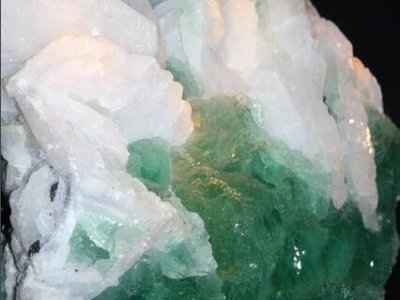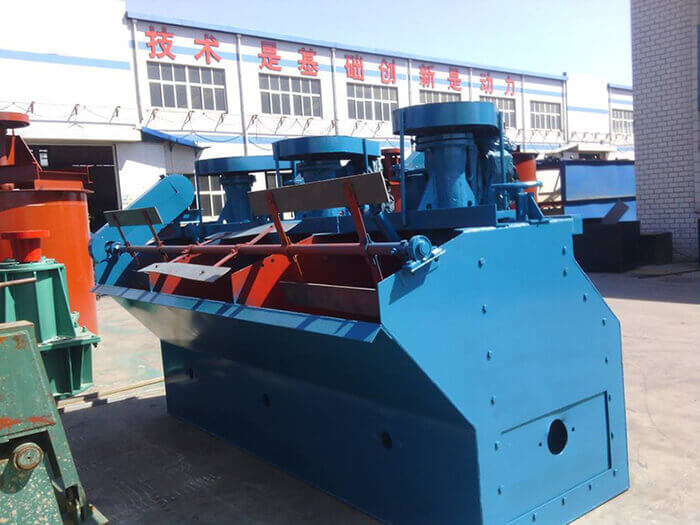Fluorite, also known as fluorspar, has a main chemical composition of CaF2, a relative density of 3.03.2, Mohs hardness of 4, brittleness, and a melting point of 1270-1350°C. Fluorite is a relatively common mineral that is widely distributed. According to past statistics, about 500 million tons of fluorite ore resources have been identified in the world, and the identified reserves are about 250 million tons. China’s fluorite reserves rank third in the world, second only to South Africa and Mexico.

As a common mineral in nature, fluorite is called “the second rare earth” due to its value and wide industrial application rate. There are many single-type fluorite deposits in China, but the reserves are small, while the number of co-associated deposits is small and the reserves are large. The refining of fluorite depends on good beneficiation and sorting technology, and the grade and recovery rate of fluorite are directly affected. Following we will discuss the 7 factors that affect the Fluorite grade and recovery rate.
1. Grinding Fineness
In fluorite flotation beneficiation, grinding fineness is one of the main factors affecting the beneficiation index, which directly affects the beneficiation index of the final fluorite concentrate. For fluorite ore flotation beneficiation, when the flotation particle size is coarse, the flotation selectivity is high, the fluorite concentrate grade is low and the recovery rate is high; when the flotation particle size is medium, the fluorite concentrate grade and the recovery rate are high. are higher; when the flotation particle size is finer, the fluorite concentrate grade and the recovery rate are both lower. Therefore, we remind that in order to obtain the ideal fluorite grade and recovery rate, a strict beneficiation test must be carried out, and the grinding fineness should be determined according to the properties of the fluorite ore.
2. The Pulp Temperature
Within a certain temperature range, when the temperature is high, the solubility of carboxylic acid collectors in the slurry increases, making it easier to disperse, and the ability to collect fluorite ore is also stronger, and the recovery rate of fluorite ore is higher, but If the fluorite ore is not completely dissociated, part of the gangue minerals will be separated out together with the fluorite ore, which will result in a lower grade of fluorite ore. When the temperature is low, the collection capacity of carboxylic acid collectors is weak, but some fluorite ore with better floatability will still be selected. At this time, the fluorite ore grade is high, but the recovery rate is low. It can be seen that properly increasing the slurry temperature can also improve the fluorite flotation index.
3. The Type and Dosage of Flotation Reagents Should be Reasonable
Fluorite flotation reagents are mainly concentrated on collectors, inhibitors, and pH adjusters. The commonly used collectors in stone flotation beneficiation are mainly fatty acids, followed by hydrocarbyl sulfates, alkyl sulfonates, tar oil, organic sulfonates, and sulfates. The inhibitor mainly uses water glass, followed by sodium metaphosphate, tannic acid, baking gum, starch, dextrin, lignosulfonate, etc. Among them, the water glass is a commonly used inhibitor in fluorite flotation beneficiation. In order to improve the selective inhibitory ability of water glass, water glass and soluble salt can be formulated into a combined inhibitors, or acid water glass can be formulated with sulfuric acid in a certain proportion. The pH adjuster mainly uses sodium carbonate to provide a suitable flotation environment for the collector.

4. Mine Slurry Level
During the flotation process, fluorite minerals with better floatability preferentially reach the top layer of the foam layer. When the slurry level is low, the concentrate grade is high, but its recovery rate is low; when the slurry level is high, the recovery rate is high. , but its ore grade is low.
5. pH of the Pulp
The pH of the pulp has a great influence on the flotation of fluorite. When oleic acid is used as a collector, the floatability is better when the pH is 8-11; when the pH is 6, the floatability is also good. For different types of fluorite ores, the floatability of the gangue minerals is also greatly affected by the pH value, which in turn affects the sorting effect. For example, when oleic acid is used as a collector when the pH value is 8-9.5, Both stone and calcite have good floatability.
6. Water Quality
When fluorite is collected with oleic acid, due to the presence of Ca2+ and Mg2+ ions in the water, studies have shown that the presence of Mg2+ will seriously interfere with the flotation of fluorite and significantly reduce the flotation effect. Fluorite water needs to be pre-softened.
7. Process Optimization
Fluorite beneficiation and flotation are processes requiring a fine operation. Each process needs planned control and operation to ensure fluorite grade and recovery rate. In addition, the setting of mechanical mixing intensity should be reasonable. Within a certain mixing intensity range, with the increase of mixing intensity, the contact time between reagent molecules and mineral particles can be accelerated, and the flotation time can be reduced, so as to improve the recovery rate and grade of concentrate products.
In our opinion, fluorite flotation should be done well. It is recommended to do a good job of beneficiation test first, and formulate scientific and reasonable fluorite ore flotation separation process and technical parameters according to the nature of fluorite ore and the conditions of the beneficiation plant. It is necessary to improve the skills of operation and maintenance personnel to avoid unstable production conditions due to improper management or negligence of operation, which will affect the final fluorite flotation index.
LATEST PRODUCTS
Twin Screw Feeder
【Feeding Capacity】 10-160 t/h【Power】 2.2-…
Tubular Screw Conveyor
【Capacity】6-50 m3/h【Procesible Material】 …
Heavy Plate Feeder
Capacity: 100-240 m3/h Power: 15-45 kW Speed: 0…









